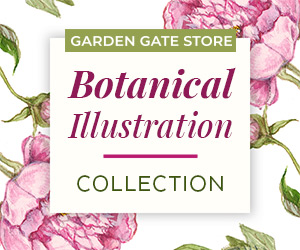
Controlling disease with integrated pest management
Plant diseases take hold when three things are present: a host plant, favorable environmental conditions and a pathogen, which may be viral, bacterial or fungal. Knowing this, the most important step in an IPM program will be preventive measures to thwart the convergence of those three factors.
4 steps to using IPM in the garden to control disease
1. Set thresholds
Does apple scab affect the fruit enough to be inedible, or just ugly? Is powdery mildew on garden phlox (Phlox paniculata) deforming the flowers, or just making the foliage dusty-looking? If the disease isn’t killing your plants or ruining your crop, you may decide it isn’t damaging enough to take action at first.

2. Monitor disease in the garden
With diseases, watching for signs (actual evidence of a pathogen) and symptoms (how the plant reacts) is important to stop them from spreading. Signs can include rust spots and molds, while symptoms might be yellow spots or veins on foliage; black, dead sections of leaves; galls; yellowed foliage, or rotting stems. The photos above show some examples of cedar-apple rust, powdery mildew and peony blotch.
3. Prevent disease in the garden
To start, make sure plants aren’t stressed by low soil fertility or inconsistent moisture. Use drip irrigation to keep soil evenly moist while foliage stays dry and fungus-free, and give your plants space for air movement. In a vegetable garden, rotate your crops. For example, move tomatoes around each year to prevent them from getting fusarium wilt, which can live in the soil and plant debris from year to year.
Keep an eye out for pests that can spread disease
Keep an eye out for insects, such as aphids, that can spread diseases like rose mosaic, and eliminate them if necessary. Finally, if you consistently have problems with a particular disease, consider getting rid of the plant and replacing it (in another part of the garden) with a variety that is known to be disease resistant. Ask your local garden center staff for help choosing.

4. Control garden disease
Sanitation is one of the best ways to stop plant diseases, because it gets rid of the pathogen: Prune off infected foliage, and disinfect pruners between cuts. The quick wipe with rubbing alcohol in the photo above is a good way to do this.
Collect fallen leaves, and cut back dead stems to the ground in fall and burn or bury them 3 ft. deep to prevent the disease from reinfecting new growth. You may have to take out plants, and even some soil around the roots, for diseases that can live in the soil for several years, such as rose rosette.
You Might Also Like:
How to Clean & Sharpen Rusty Pruners
Watch Our Smart Gardening Playlist on YouTube
Never Follow This Pruning Advice
Considerations for using chemicals to control garden disease
Sometimes a problem needs a chemical control. For example, if warm, wet weather causes anthracnose on your cucumbers that puts the entire crop at risk, you might have to resort to chemical methods. Naturally derived options include copper fungicides, horticultural oil and even baking soda.
For powdery mildew on garden phlox, try 1½ Tbsp. of baking soda in a gallon of water sprayed weekly as a preventive measure. If those are not effective, synthetic chemicals, such as mancozeb, maneb and chlorothalonil, can be used to control disease. When using any pesticide, always follow the label directions to avoid heavy residues or runoff in the soil.
You Might Also Like:
IPM Basics
Dealing With Garden Pests Using IPM
Controlling Weeds in the Garden With IPM















